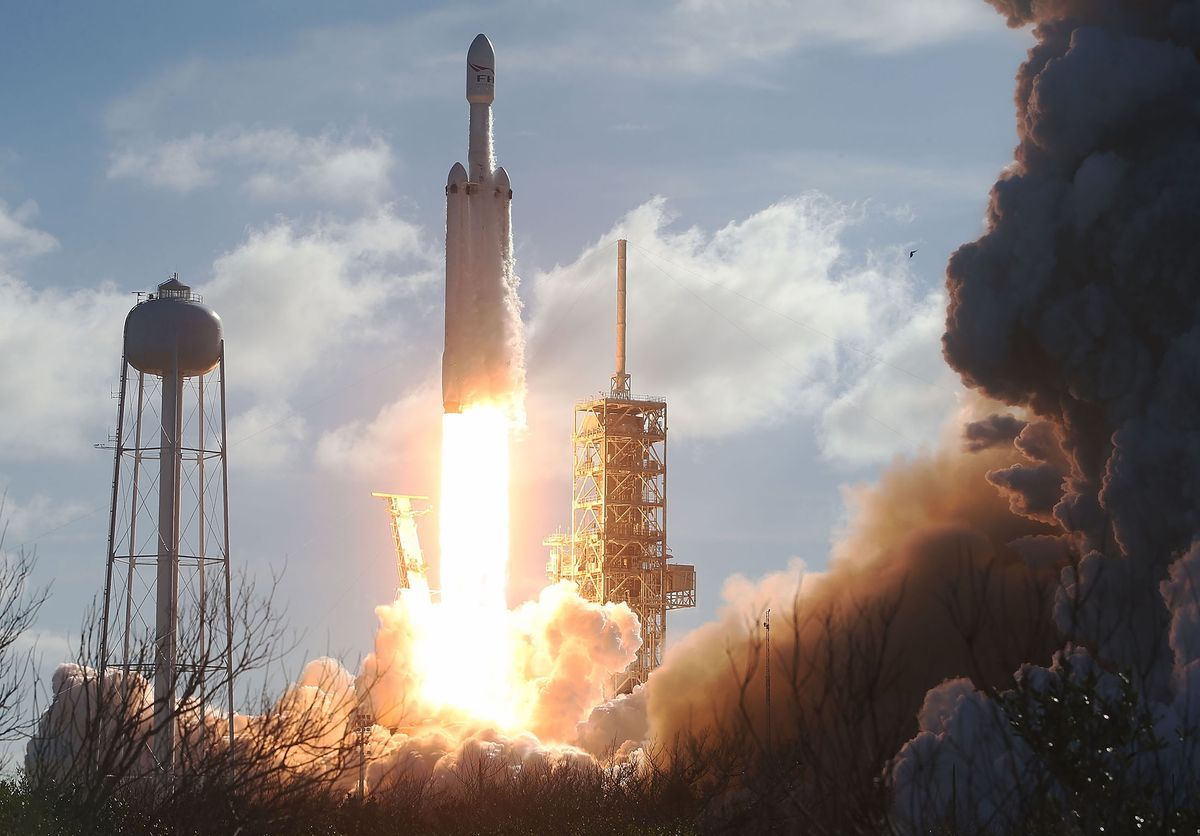Elon Musk’s planned BFR Mars rocket finds a home in Los Angeles. It’s oddly fitting for what could be a very historic spacecraft.




Elon Musk took to Twitter Sunday night to announce a new recovery method for an upper stage SpaceX rocket. A balloon — a “giant party balloon” to quote him directly — will ferry part of a rocket to a bounce house. Seriously.
If anyone else proposed this idea they would be ignored, but Elon Musk lately has a way of turning crazy ideas into reality.
It was just in 2012 that SpaceX launched and landed its first rocket and now the company is doing it with rockets significantly larger. And then early this year SpaceX made a surprise announcement that it would attempt to use a high-speed boat and large net to catch part of rocket. And it worked after a failed first attempt.

Each new technological breakthrough comes seemingly prepackaged with a new way for hackers to kill us all: self-driving cars, space-based weapons, and even nuclear security systems are vulnerable to someone with the right knowledge and a bit of code. Now, deep-learning artificial intelligence looks like the next big threat, and not because it will gain sentience to murder us with robots (as Elon Musk has warned): a group of computer scientists from the US and China recently published a paper proposing the first-ever trojan for a neural network.
Neural networks are the primary tool used in AI to accomplish “deep learning,” which has allowed AIs to master complex tasks like playing chess and Go. Neural networks function similar to a human brain, which is how they got the name. Information passes through layers of neuron-like connections, which then analyze the information and spit out a response. These networks can pull off difficult tasks like image recognition, including identifying faces and objects, which makes them useful for self-driving cars (to identify stop signs and pedestrians) and security (which may involve identifying an authorized user’s face). Neural networks are relatively novel pieces of tech and aren’t commonly used by the public yet but, as deep-learning AI becomes more prevalent, it will likely become an appealing target for hackers.
The trojan proposed in the paper, called “PoTrojan,” could be included in a neural network product either from the beginning or inserted later as a slight modification. Like a normal trojan, it looks like a normal piece of the software, doesn’t copy itself, and doesn’t do much of anything… Until the right triggers happen. Once the right inputs are activated in a neural network, this trojan hijacks the operation and injects its own train of “thought,” making sure the network spits out the answer it wants. This could take the form of rejecting the face of a genuine user and denying them access to their device, or purposefully failing to recognize a stop sign to create a car crash.


In its early life, the Earth would have been peppered nearly continuously by asteroids smashing into our young planet. These fiery collisions made our world what it is today. It may seem like things have changed since then, given the vast assortment of life and wide blue oceans—and things have indeed changed. At least in some respects. However, Earth still receives thousands of tons of matter from space, but this is in the form of microscopic dust particles (as opposed to recurrent, energetic collisions).
Fortunately, in modern times, a large asteroid colliding with the surface of the Earth happens only very rarely. Nevertheless, it does happen from time to time.
As most are probably already aware, it is widely believed that an asteroid initiated the dinosaurs’ extinction some 65 million years ago. And more recently, the Russian Chelyabinsk meteor hit our planet in February of 2013. It entered at a shallow angle at 60 times the speed of sound. Upon contact with our atmosphere, it exploded in an air burst. The size of this body of rock (before it burned up and shattered) is estimated to be around 20 meters (across) and it weighed some 13,000 metric tons.



“Do You Trust this Computer?” is a documentary about artificial intelligence and it’s free to stream until tonight.
Chris Paine, the man behind “Who Killed the Electric Car” that looked at General Motors and Tesla, has a new documentary called “Do You Trust This Computer” that looks at how artificial intelligence could threaten the future of humanity. Elon Musk shared the video on Twitter.
